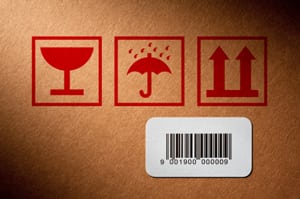 While brands have many choices when it comes to fulfillment and distribution, forgoing sustainable packaging is no longer one of them. Green packaging may feel like an add-on best reserved for the trendiest retailers, but this is not necessarily the case. According to a recent packaging study by Dotcom Distribution, 57% of shoppers said that green packaging is important – for all brands.
While brands have many choices when it comes to fulfillment and distribution, forgoing sustainable packaging is no longer one of them. Green packaging may feel like an add-on best reserved for the trendiest retailers, but this is not necessarily the case. According to a recent packaging study by Dotcom Distribution, 57% of shoppers said that green packaging is important – for all brands.
Regardless of whether a brand thinks that being green is worth it, 61% of consumers have considered green packaging when deciding where to shop. Consumer preferences clearly indicate that shoppers are looking to reward brands that strive for eco-conscious practices.
Moving forward, all brands should consider adapting their operations to be greener. For those that have never broached sustainable practices before, here are three tips to develop environmentally-friendly packaging.
Keep customers informed and involved
Before changing your packaging to be more sustainable, bring your customers into the decision-making process and ask about their preferences. When it comes to packaging, perception is key and brands can often do more to educate shoppers on what it means to be green. Don’t expect to change packaging without warning or educating your customers. You may see it as a minor detail, but it represents their relationship to the brand. Approach packaging changes like you would any emotional exchange with customers – with care and frequent communication.
Whenever changes to packaging are made, brands should include information on why those changes were made. A customer may have never seen a box printed with soy-based ink before, and a little information can help them view improvements as proactive and worth sharing. When consumers feel they’re being included throughout the decision-making process, they’re more likely to develop long-term brand loyalty.
In order to include shoppers in the design process, brands can encourage customer feedback with simple calls-to-action. They can also gather information by monitoring social media, where consumers are already apt to share both positive and negative experiences. Brands can also cultivate conversation around green packaging to highlight both their efforts and the broader environmental impact of their packaging changes.
Get rid of poor packaging practices
Moving toward sustainability begins with materials. Today, brands can choose highly recyclable packages that are also aesthetically appealing. For example, soy-based inks come in many colors and are highly sustainable. With simple changes like these, brands can maintain exciting packaging while encouraging environmental preservation.
Brands should also examine how their products are being packaged. When improperly designed, even the most environmentally friendly box can deter sustainability. To start, brands can evaluate the volume of packages and ensure that space is being maximized, reducing excess air room and downsizing when possible. This is great because oversized boxes are not only wasteful, but they also lead to poor dimensional pricing. Under dimensional pricing, smaller packages may be cheaper to ship than larger, bulkier ones.
Improve your supply chain
Finally, after fine tuning green packaging, you should rework supply chain processes. As many brands partner with distribution centers to handle fulfillment, this is not always the most obvious step. However, it is an important one as a partner’s own environmental hazards can offset a brand’s overall green improvements. For example, brands need to take a close look at how packages move from warehouse to doorstep. If you’ve partnered with a third-party logistics firm that maintains questionable practices, they should rethink how this can impact your overall brand goals.
With today’s techniques, environmentally-friendly packaging options can still allow brands to preserve product integrity and uniqueness. As the ecommerce industry continues to expand, the environmental trend will only build, so brands need to embrace the change now.
Maria Haggerty is the CEOof Dotcom Distribution
